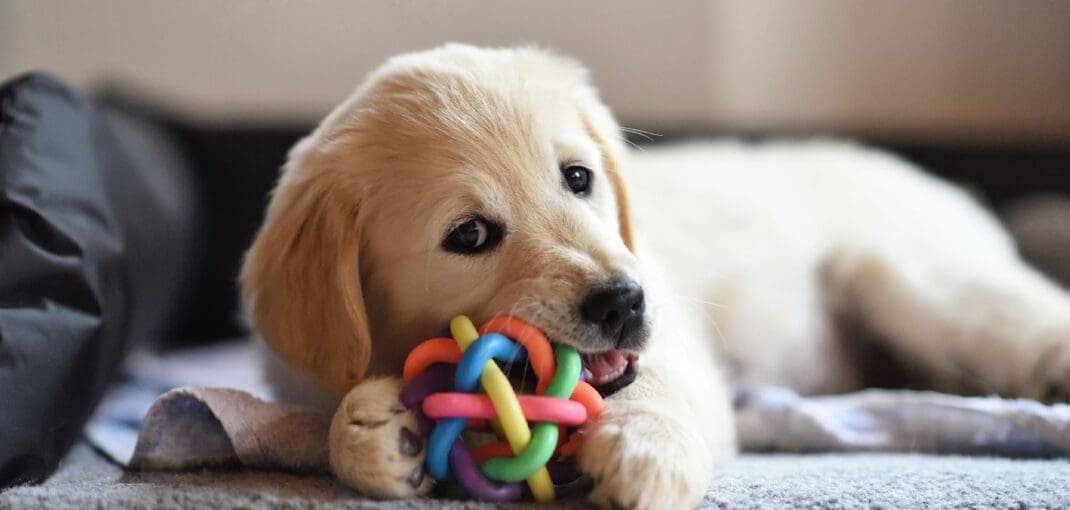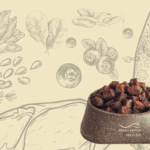A dog is now not only man’s best friend, but above all a fully-fledged member of the family, so it is hard to imagine that it could be missing. The decision to buy from a kennel or adopt a puppy concerns all members of the household. It should be rational in the context of daily chores, lifestyle and the time we can devote to the new resident. The first days of a puppy’s life at home can be difficult for him and also for the new carers. We will suggest how to prepare for this decision and enjoy the puppy period of our pet.
Puppy at home – the first days of life together
When deciding on a puppy, it is advisable to read professional literature on the characteristics of the breed several months beforehand. It is also helpful to talk to friends who are experienced carers or people who work with dogs on a daily basis.
At the outset, it is a good idea to determine the preferences of all the people with whom the four-legged resident will live. This will help us find a dog that will be a great companion for the whole family.
If someone is phlegmatic and appreciates calmness, he may not be able to tolerate the company of an active and intensive terrier. On the other hand, they may get along well with a dog described as a companion dog, such as a bichon or poodle.
Puppy at home – chores or pleasures?
It makes no difference whether our dog will live in a detached house or a block of flats. The most important issue is the walking areas nearby. Regardless of breed, weight, temperament or age, every dog needs to take several walks a day, including one longer one. It is worth finding out which breeds need more exercise to satisfy their instincts. Statistically, the greatest number of problems resulting from undesirable behaviours such as separation anxiety, destroying objects or vocalisation can be linked to a lack of opportunity to expend energy.
Puppy at home – how to choose a breed?
Before the arrival of the four-legged dog at home, we should allocate space for its bedding, bowls or toys. If you decide to get a dog from a kennel, it is worth doing everything to get to know the pre-selected breed in person. To this end, it is a good idea to go to a dog show or to a kennel for specific breeds. Literature about dogs will help us to get to know the character of a given breed, its potential for training, sports or susceptibility to diseases.
After such preparation, we apply to a breeder of a specific breed, bearing in mind that it should be an FCI breeder of Kennel Club. Beforehand, you can browse the websites of different breeders of the same breed or use the recommendations of people who previously decided to buy a dog from a specific kennel. The purchase of a puppy should be based on mutual trust between the future owner of the four-legged dog and the breeder. A professional dog breeder takes care of the bitch during pregnancy, and then of the mother and the puppies – from their first day of life. Home breeding allows the puppies to be properly socialised and provided with the right stimuli.
Socialisation of the puppy, or the important role of the breeder
For the first 3 – 4 weeks of life, the puppy should stay with its mother and siblings in a secluded place. Then the canine family can go to a place where they spend time together with the household members and so begin to function together in everyday life. This brings the puppies into contact with different noises, surfaces and people. They can also familiarise themselves with toys that differ in shapes, smells, textures. They become familiar with the noises that will be present in their lives, such as the dryer, hoover, television, kitchen appliances or the sound of falling objects, such as keys. At about 4 weeks of age, breeders and other household members begin to pick up the little ones. Observing the puppies allows the dominant character traits to be spotted, which is helpful in recommending a particular puppy for a new carer. Usually, the breeder also teaches the puppy to settle its physiological needs on disposable pads, as during the vaccination quarantine period, the dogs do not leave the house, including the target one.
The socialisation of the puppy while it is still at the breeder is fundamental for its later proper development. Thanks to this, we have the chance to have a dog that will be able to live in a social group, not only within its own species. Familiarisation at puppy age with dangers such as noise, different contacts or surprising situations helps to make him more resilient to stress. A committed breeder takes care of the vaccination and deworming calendar. He does not give the puppy away before 6-8 weeks of age.
Adopting a puppy
The situation is different if we want to adopt a puppy from a shelter, animal shelter, foundation or other difficult circumstances. Our experience of dealing with a puppy from volunteers is then a guide. In such a case, it should be reckoned with the fact that we are the ones who have to work more on its socialisation as soon as it arrives at home, i.e. do a similar job as the breeder does in the first 8 weeks of life. Adopting a puppy is a beautiful gesture for an animal that has met with misfortune. It is worth making a greater effort to adopt such a dog to its abilities and conditions.
Prepare your home for a dog
An important element before a puppy arrives at home is to make sure that the environment in which it will live is safe. We recommend hiding shoes, clothes and all items from the floor in cupboards. The toddler must not have access to chemicals, medicines, food or cables. At the stage of the first months of life, chewing on everything that comes across his path is a way of learning about the world around him.
First meeting with a puppy
If we already have a particular dog chosen from a breeder or adopted from a shelter, we begin our journey through life together. It is best to pick up the new four-legged household member in at least two people, appointing one person to take care of the little dog in the car. We agree beforehand with the person we are picking up the dog from so that we do not feed him a few hours before the journey. This may allow us to avoid vomiting, but it is not a guarantee, as some toddlers up to the age of 1 year are prone to such problems while driving. Speak affectionately to your new pet during the journey, trying to tone down his emotions and stress resulting from the new situation. Once home, give your puppy time to familiarise himself with his surroundings. He will have plenty of new stimuli. Let’s react enthusiastically if he approaches his bedding, bowls or toys. If he is not immediately interested in food, give him some time. It is worth remembering that for the first few days you should feed your baby the same food as before. The change of food should be introduced gradually.
A new family member on four paws stirs up a lot of positive emotions, and excitement and joy in children. Allow your pooch to get to know the household at his own pace and try to follow his expectations. The first nights with a puppy can be a challenge for everyone. A few weeks old pup will most likely miss his mum and siblings. He may squeal instead of sleeping. If his bed is close to our bed, we can gently speak to him and stroke him to soothe his longing. We do not recommend taking your puppy to bed, as he will quickly conclude that this is his bedding.
Grooming your puppy
A few days after your puppy arrives home, it’s a good idea to teach him rituals that will be important for his health and well-being. These include cleaning his teeth, looking in his ears, looking at his paws, playing together or learning commands and tricks. If spending time together takes a permanent place in the daily schedule, our pooch will be happy and secure.
The first days together are very important for the dog. As you can see, taking a new pet under your roof requires a lot of time, work and even patience. It is worth remembering to make the puppy feel safe in its new home. Our tips will help the future pet owner get through the puppy dog period and enjoy life together.






